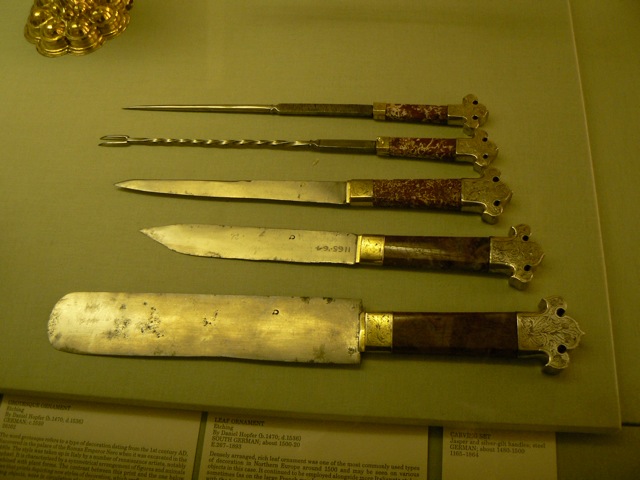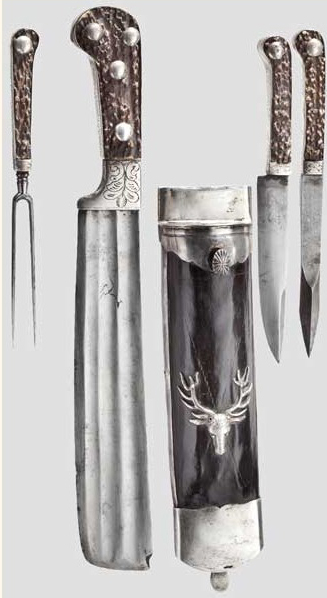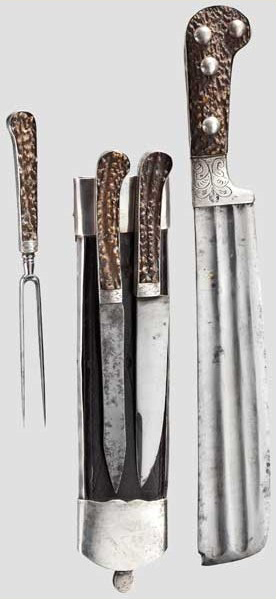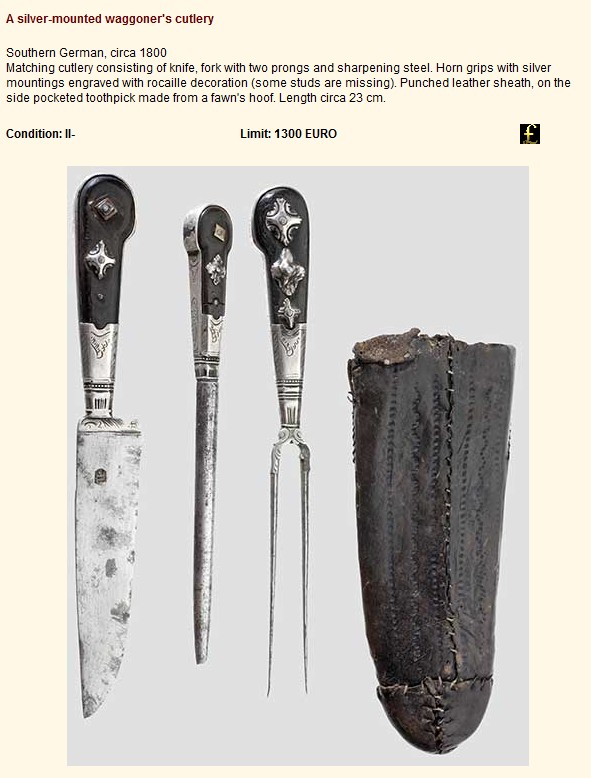Interestingly the set includes both a fork *and* a pricker.
In the scabbard of many knives and some swords from the 14th - 16th C you can see a set of by-knife and/or a steel awl, or pricker. Or at least that is how it is often interpreted.
Of course this tool would work well as an awl for various purposes, and possible also double as a fork at the table.
But I have wondered if the pricker/awl primarily is intended as a sharpening steel: something that makes much more sense to have close at hand for touching up an edge whenever it has lost some of its bite.
Seeing the table knives at the V&A was exiting: here we see a dedicated fork as well as a pricker is included in the set. The file can help establish a new raw edge, and the steel needle is used to polish the edge into a fne cutting sharpness.

The complete set...

And a close up of the fork and steel.




